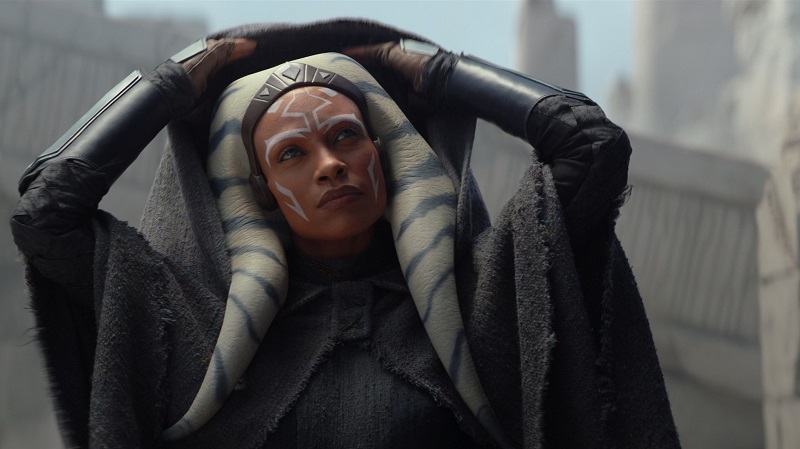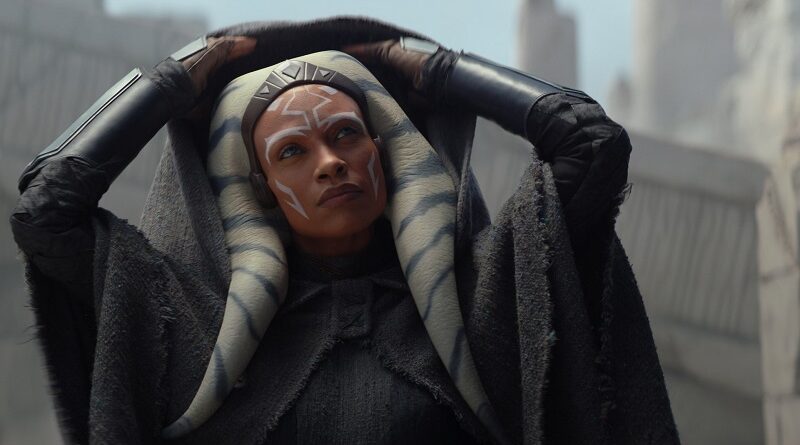Hyperspace Theories: Masters, Apprentices, and Witches in AHSOKA Premiere
The circle is now complete. Dave Filoni, longtime storytelling Padawan to George Lucas, has been Executive Creative Director for Star Wars for three years and played an instrumental role in the creation and progression of The Mandalorian streaming series. With Ahsoka, the latest live-action Disney+ series from Star Wars, Filoni not only leads the project in full – he wrote all eight episodes and directed the first (and fifth) – but also brings the erstwhile Jedi apprentice from key member of ensemble casts to titular character and central figure. Over the past fifteen years, from The Clone Wars to Star Wars Rebels to Mando and Grogu to Ahsoka, Filoni and Tano have traversed similar paths.
In this episode of Hyperspace Theories, Tricia Barr and B.J. Priester share our reactions, review, and analysis of the two-episode Ahsoka premiere, “Master and Apprentice” and “Toil and Trouble.” We begin with our praise for the representation and diversity in the cast of Ahsoka. After more than a decade at FANgirl Blog criticizing Star Wars for its often poor track record in that regard, it is thrilling to watch a series in which the “big three” lead protagonists are all women (Ahsoka, Sabine, and Hera) and two of the three antagonists (Morgan and Shin, with Baylan) are women, too. Ahsoka also features women of color in four of those six roles, as well as actors of color throughout the supporting cast.

Turning to the storytelling, we discuss the parallels between Baylan and Shin, with their orange lightsabers and a familiar Padawan braid, and the tutelage relationships between Ahsoka and Sabine and, previously, Anakin and Ahsoka. We also examine how Filoni draws upon all aspects of Star Wars storytelling, including elements from the Original Trilogy, the Prequel Trilogy, and the Legends tales of the Expanded Universe, as well as more recent Star Wars productions. With Morgan Elsbeth confirming her connection to the Nightsisters, also known as the Witches of Dathomir – something we had speculated about after her initial appearance in The Mandalorian – we consider what Ahsoka may have to say about the Jedi, the Sith, individuals who are not-quite-Jedi or not-quite-Sith, and other ways Star Wars characters might perceive or wield the Force. This idea is especially interesting in light of Professor Huyang’s emphasis to Sabine Wren that, while she may not be strong in the Force, she can still train in and follow the ways of the Jedi. We conclude with some brief speculations, informed by footage from the trailer and teasers that did not appear in the premiere episodes, on how the story might unfold in the remaining six.
The Ahsoka series premiered on Disney+ during the concurrent ongoing strikes against Disney and other major Hollywood studios by unions representing the writers (WGA) and actors (SAG-AFTRA) who are indispensable to their productions. Accordingly, neither Filoni nor any of the actors in Ahsoka could participate in promotional interviews or other marketing for the series (although they appear in material previously recorded, such as interviews at Star Wars Celebration in April, that is shared by Disney or entertainment journalists). Aside from its value in raising the visibility of the series to the prospective audience, such interviews with talent often provide fascinating insight into the storytelling process, characterization and motivations, and the themes and values underlying a series. We are disappointed that the studios have denied the talent the opportunity to participate in the excitement of the series launch, and the fans and audience the ability to share in their enthusiasm and learn from it, through their unwillingness to agree to reasonable terms relating to changing technology, shifts in production and distribution within the industry, and a fair sharing of billions of dollars in global profits with those who make those profits possible in the first place. Despite the ongoing strikes, the unions have not called for a boycott of the studios: they encourage fans and audience to watch newly released films and series (to demonstrate their value and profitability) and have clarified that non-promotional activities such as reviews, criticism, and analysis are not inconsistent with the terms of the strike. At FANgirl Blog and Hyperspace Theories, we intend to discuss Star Wars (and other projects from the struck studios) in solidarity with the unions and in conformity with their approved official guidance.
- Hyperspace Theories: SKELETON CREW Ahoy! - December 29, 2024
- Hyperspace Theories: WICKED Part I Rises to the Moment - December 6, 2024
- Columbia’s Vader™ Collection Launches Dec 5 - November 27, 2024










